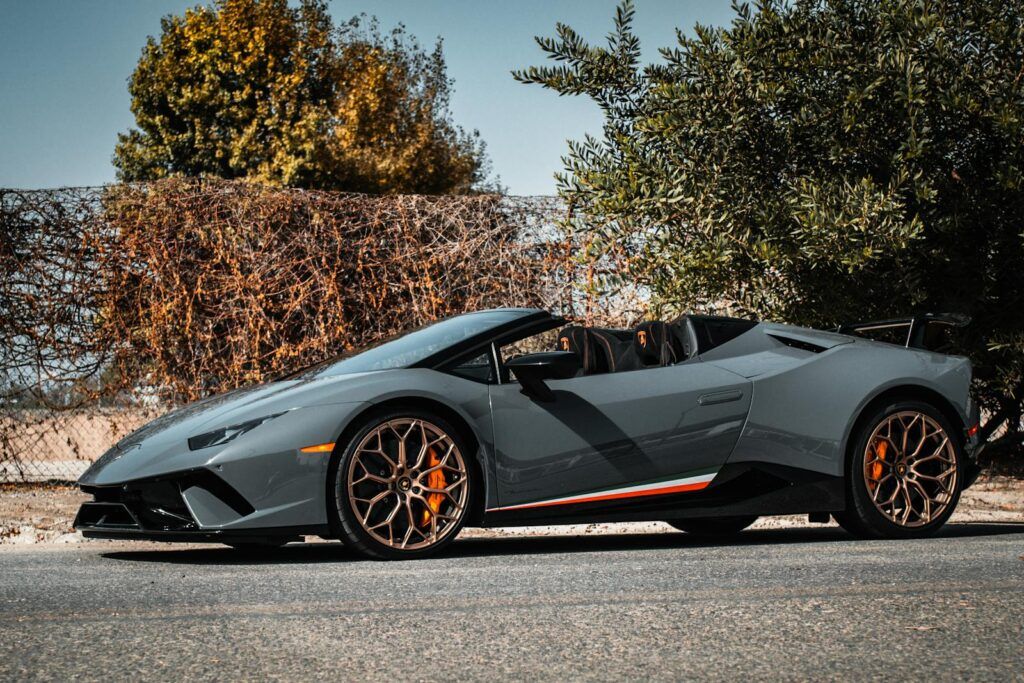If you’re anything like us, you probably spend a fair bit of time daydreaming about the glory days of motoring. Those magical decades when cars weren’t just modes of transport, but bold statements, technological triumphs, and often, works of art that ignited the soul. There’s a tangible thrill in imagining these mechanical masterpieces thrumming to life in your very own garage, a connection to a bygone era of pure, unadulterated automotive passion. This isn’t just about speed or specs; it’s about the very essence of what makes a car truly legendary.
We miss the times when a car’s identity wasn’t blurred by corporate synergy or subtle design cues. Each machine had a personality, a distinctive roar, and a silhouette that could be recognized a mile away, no badge required. These are the vehicles that etched themselves into history, not just for what they could do, but for the indelible mark they left on culture, technology, and the hearts of enthusiasts worldwide. They are the legends that defined their respective eras, proving that true genius never goes out of style.
So, prepare to embark on an exhilarating journey through the annals of automotive greatness. We’re diving deep into some of the most iconic classic cars ever built, machines that have captivated generations and continue to inspire awe. Buckle up, because we’re about to explore the metal, the magic, and the sheer audacity that makes these cars the ultimate collector’s dream.
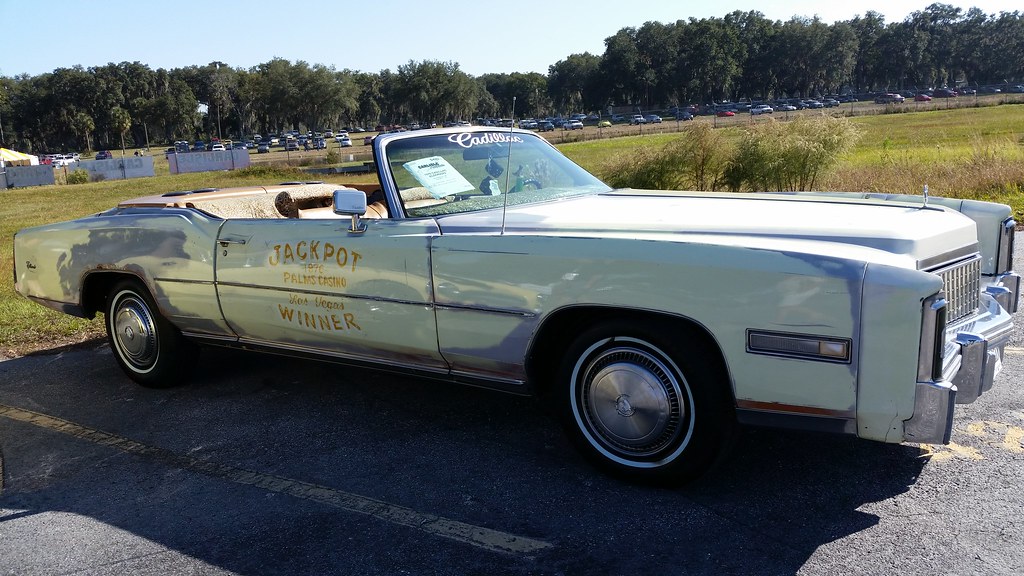
1. **Cadillac Eldorado**
The Cadillac Eldorado isn’t just a car; it’s a rolling testament to American luxury and ambition, a true titan of the highway. With an astoundingly long history, this magnificent beast spanned no less than 12 generations, gracing the roads from 1952 all the way to 2002. For decades, the name Eldorado has been utterly synonymous with the pinnacle of American automotive opulence, setting the standard for what a luxury car should be.
This was Detroit’s magnificent, chrome-laden gauntlet thrown down, representing the first serious and unapologetic challenge to the established automotive royalty of England, Germany, and Italy. It wasn’t content to simply exist; it demanded attention, showcasing a distinctly American vision of grandeur that resonated deeply with a nation on the rise. Every curve, every line, and every detail screamed ‘success’.
From its glistening chrome rims that caught the sun with dazzling brilliance to those unmistakable, soaring shark fins, the Eldorado was, and remains, the very definition of iconic. It wasn’t just transportation; it was a lifestyle statement, an affirmation of status and style that few other cars could ever hope to emulate. To drive an Eldorado was to command the road, enveloped in a cocoon of unbridled American luxury.
Car Model Information: 1976 Cadillac Eldorado Convertible
Caption: 1963 Cadillac Eldorado Convertible
Name: Cadillac Eldorado
Manufacturer: Cadillac
Production: 1952–2002
Layout: Front-engine, rear-wheel-drive layout
Aka: Cadillac Fleetwood Eldorado
Class: Personal luxury car
Successor: Cadillac CTS
Categories: 1960s cars, 1970s cars, 1980s cars, 1990s cars, 2000s cars
Summary: The Cadillac Eldorado is a luxury car manufactured and marketed by the Cadillac Motor Car Division of General Motors from 1952 until 2002, over twelve generations.
The Eldorado was at or near the top of the Cadillac product line. The original 1953 Eldorado convertible and the Eldorado Brougham models of 1957–1960 had distinct bodyshells and were the most expensive models offered by Cadillac during those years. The Eldorado was never less than second in price after the Cadillac Series 75 limousine until 1966. Beginning in 1967, the Eldorado retained its premium position in the Cadillac price structure, but was manufactured in high volumes on a unique, two-door personal luxury car platform.
The Eldorado carried the Fleetwood designation from 1965 through 1972, and was seen as a modern revival of the pre-war Cadillac V-12 and Cadillac V-16 roadsters and convertibles.
Get more information about: Cadillac Eldorado
Buying a high-performing used car >>>
Brand: Cadillac Model: Eldorado
Price: $28,499 Mileage: 31,898 mi.
Read more about: Unearthing Gems: 15 Undervalued 1980s Sports Cars That Are Smart Buys for Collectors Today
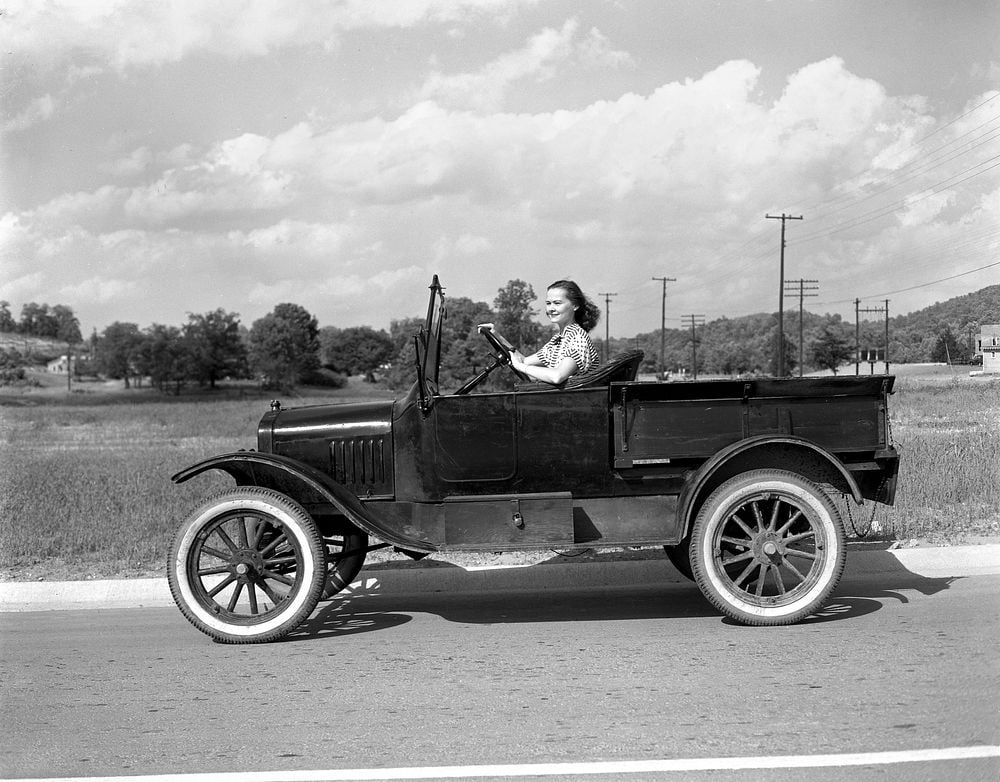
2. **Ford Model T**
Before the Model T, cars were a luxury, a plaything for the wealthy. After the Model T, the automobile became a tool for the masses, a truly transformative invention that changed the face of the world forever. Henry Ford, the visionary behind it all, famously (or perhaps apocryphally) declared in 1909 that his customers “can have a car painted any color that he wants, so long as it is black.” This singular focus wasn’t about limiting choice, but about maximizing efficiency.
Whether those exact words were uttered at the time, the sheer impact of Ford managing to flood the market with a car available only in black remains an impressive feat of industrial ingenuity. It showcased a pragmatic genius that prioritized accessibility above all else. This was a car built for the everyman, democratizing personal transport in a way no one thought possible.
Ford’s revolutionary efficient assembly lines were the true engine of this revolution, allowing Model Ts to be produced at an unprecedented scale and, crucially, at an incredibly affordable price point. This meant that, for the first time, cars were within reach for all consumers, not just the moneyed elite. The Model T wasn’t just a vehicle; it was a symbol of progress, opening up new horizons for millions and fundamentally reshaping society.
Car Model Information: 2018 Ford Mustang EcoBoost Premium
Caption: 1925 Ford Model T Touring Car
Manufacturer: Ford Motor Company
Production: October 1908 – May 1927
Assembly: collapsible list
Designer: Childe Harold Wills
Class: Economy car
BodyStyle: collapsible list
Layout: FMR layout
Engine: straight-4
Transmission: planetary gear
Wheelbase: 100.0 in
Abbr: on (1912 roadster)
Length: 134 in
Width: 1676 mm
Height: 1860 mm
Weight: convert
Predecessor: Ford Model N
Successor: Ford Model A (1927–1931)
Categories: 1900s cars, 1908 establishments in the United States, 1910s cars, 1920s cars, All articles needing additional references
Summary: The Ford Model T is an automobile that was produced by the Ford Motor Company from October 1, 1908, to May 26, 1927. It is generally regarded as the first mass-affordable automobile, which made car travel available to middle-class Americans. The relatively low price was partly the result of Ford’s efficient fabrication, including assembly line production instead of individual handcrafting. The savings from mass production allowed the price to decline from $780 in 1910 (equivalent to $26,322 in 2024) to $290 in 1924 ($5,321 in 2024 dollars). It was mainly designed by three engineers, Joseph A. Galamb (the main engineer), Eugene Farkas, and Childe Harold Wills. The Model T was colloquially known as the “Tin Lizzie”.
The Ford Model T was named the most influential car of the 20th century in the 1999 Car of the Century competition, ahead of the BMC Mini, Citroën DS, and Volkswagen Beetle. Ford’s Model T was successful not only because it provided inexpensive transportation on a massive scale, but also because the car signified innovation for the rising middle class and became a powerful symbol of the United States’ age of modernization. With over 15 million sold, it was the most sold car in history before being surpassed by the Volkswagen Beetle in 1972.
Get more information about: Ford Model T
Buying a high-performing used car >>>
Brand: Ford Model: Model T
Price: $21,000 Mileage: 43,830 mi.
Read more about: The Ultimate Family SUV Showdown: Uncovering 2025’s Top Contenders for Legroom and Interior Space
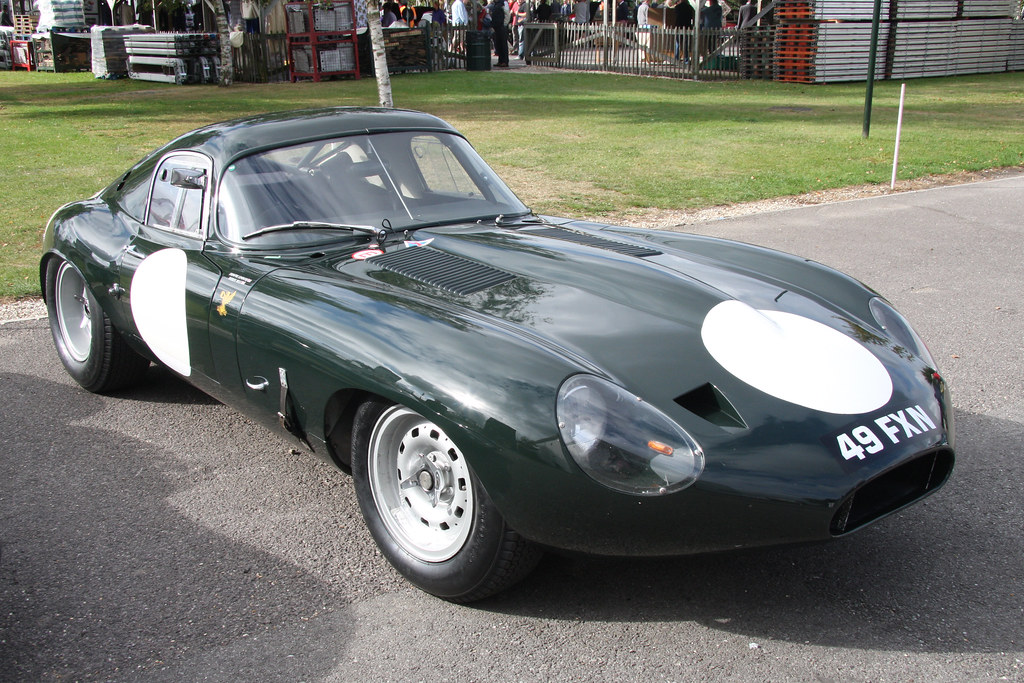
3. **Jaguar E-Type**
Few cars have ever captivated the world quite like the Jaguar E-Type, and it’s no exaggeration to say that the ’61 and ’62 models almost single-handedly forged Jaguar’s worldwide reputation. This wasn’t merely a sports car; it was, and in many ways still is, the absolute epitome of British automotive elegance and performance. It combined breathtaking beauty with exhilarating speed, creating an irresistible package.
Its stunning design was so universally acclaimed that even Enzo Ferrari, a man not known for doling out compliments to rivals, and the esteemed Daily Telegraph newspaper, both agreed the E-Type was “the most beautiful car of all time.” When such arbiters of taste and speed concur, few can seriously doubt their judgment. It’s a testament to the timeless lines and perfect proportions that have endeared it to generations of enthusiasts.
Beyond its visual charm, the E-Type was a revolutionary sports car, pairing its sleek lines and aerodynamic profile with high performance and an undeniable sense of luxury. With its 3.8-liter engine and a top speed that pushed boundaries, it was a favorite among both car enthusiasts and celebrities alike. The E-Type didn’t just drive; it floated, a sublime blend of art and engineering that continues to turn heads and stir hearts to this very day.
Car Model Information: 1974 Jaguar E-Type Series III Numbers Matching! 11k Original Miles! Concourse Quality!
Sp: uk
Name: Jaguar E-Type
Caption: 1961 E-Type Series 1 3.8-Litre, the first production model of this open two-seater
Aka: Jaguar XK-E (North America),Jaguar V-12
Manufacturer: Jaguar Cars
Production: 1961–1974
Class: Sports car
Predecessor: Jaguar XK150
Related: Jaguar D-Type,Jaguar XJ13
Successor: Jaguar XJS
Layout: FMR layout
Assembly: Coventry,England
Designer: Malcolm Sayer
Categories: 1970s cars, 2+2 coupés, All Wikipedia articles written in British English, All articles with dead external links, All articles with specifically marked weasel-worded phrases
Summary: The Jaguar E-Type, or the Jaguar XK-E for the North American market, is a British front mid-engined sports car that was manufactured by Jaguar Cars Ltd from 1961 to 1974. Its sleek appearance, advanced technologies, high performance, and competitive pricing established it as an icon. The E-Type’s claimed 150 miles per hour (240 km/h) top speed, sub-7-second 0 to 60 mph (97 km/h) acceleration, largely unitary body construction, front and rear independent suspension with disc brakes, mounted inboard at the rear, and rack-and-pinion steering spurred industry-wide changes.
The E-Type was based on Jaguar’s D-Type racing car, which had won the 24 Hours of Le Mans for three consecutive years beginning in 1955.
The E-Type employed what was, for the early 1960s, a novel design principle, with a front subframe carrying the engine, front suspension and front bodywork bolted directly to the body tub. No ladder frame chassis, as was common at the time, was needed and as such the first cars weighed only 1,315 kg (2,899 lb).
It is rumored that, on its debut on 15 March 1961, Enzo Ferrari called it “the most beautiful car ever made”, but this statement is not fully confirmed. In 2004, Sports Car International magazine placed the E-Type at number one on their list of Top Sports Cars of the 1960s. In March 2008, the Jaguar E-Type ranked first in The Daily Telegraph’s online list of the world’s “100 most beautiful cars” of all time.
Get more information about: Jaguar E-Type
Buying a high-performing used car >>>
Brand: Jaguar Model: E-Type
Price: $110,800 Mileage: 11,946 mi.
Read more about: The End of an Era: 11 Iconic Sports Cars Enthusiasts Are Mourning (and Why They’re Gone)
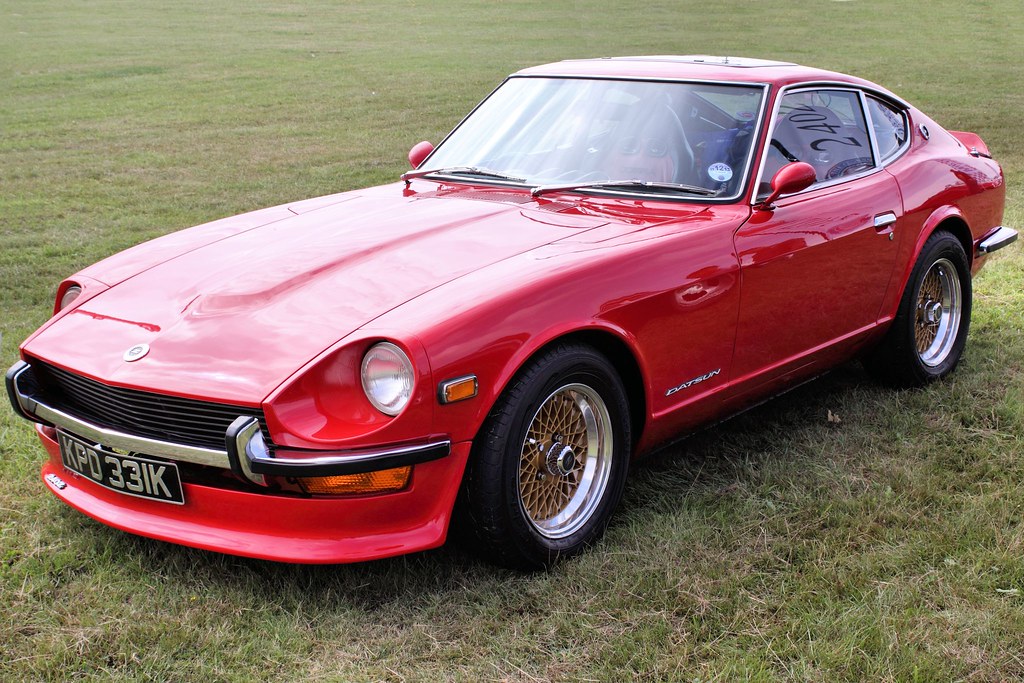
4. **Datsun 240Z**
In the grand tapestry of automotive history, some cars are trailblazers, forging paths where none existed before. In the United States, the Datsun 240Z was precisely that for import cars, much like the Model T was for automobiles in general. When it burst onto the scene in 1970, it wasn’t just another foreign car; it was a revelation, opening up an entirely new market segment to the burgeoning middle class.
What made the 240Z so extraordinary was its uncanny ability to deliver an experience akin to European sports cars, but without the prohibitive price tag. It was, quite frankly, nearly the spitting image of a Jaguar E-Type – a legendary design – yet it was offered for a much more economical price. This clever positioning made high-performance, stylish motoring accessible to a much broader audience, something previously unheard of.
It’s no exaggeration to state that the Datsun 240Z laid the crucial groundwork for the widespread acceptance and immense popularity of Japanese automobiles in the West. It proved that quality, performance, and style could come from Japan, paving the way for the high-quality Hondas, Toyotas, and Nissans that dominate our roads today. The 240Z wasn’t just a car; it was a cultural ambassador, reshaping perceptions and opening doors.
Car Model Information: 1972 Datsun 240Z
Name: Nissan Fairlady Z (Datsun 240Z, 260Z, and 280Z)
Aka: unbulleted list
Manufacturer: Nissan
Production: 1969–1978
Class: Sports car
Layout: Front-engine, rear-wheel-drive layout
Assembly: Hiratsuka, Kanagawa
BodyStyle: unbulleted list
Designer: Yoshihiko Matsuo
Predecessor: Datsun Sports
Successor: Nissan Fairlady Z (S130)
Caption: 1970–1973 Nissan Fairlady Z
Categories: 1970s cars, All Wikipedia articles written in American English, All articles with unsourced statements, Articles with short description, Articles with unsourced statements from February 2021
Summary: The Nissan S30, sold in Japan as the Nissan Fairlady Z but badged as the Datsun 240Z, 260Z, and 280Z for export, are 2-seat sports cars and 2+2 GT cars produced by Nissan from 1969 until 1978. The S30 was conceived of by Yutaka Katayama, the President of Nissan Motor Corporation U.S.A., and designed by a team led by Yoshihiko Matsuo, the head of Nissan’s Sports Car Styling Studio. It is the first car in Nissan’s Z series of sports cars.
The S30 had four-wheel independent suspension and a powerful straight-six engine with an overhead camshaft, features identified with far more expensive premium European sports cars and coupés such as the Jaguar E-Type and BMW 2800 CS, but absent from similarly priced sports cars such as the Alfa Romeo Spider, MGB and Opel GT, which had smaller four-cylinder engines and rear live axles. The S30’s styling, engineering, relatively low price, and impressive performance resonated with the public, received a positive response from both buyers and the motoring press, and immediately generated long waiting lists.
As a halo car, the S30 broadened the acceptance of Japanese carmakers beyond their image as producers of practical and reliable but prosaic and unfashionable economy cars. Datsun’s growing dealer network—compared to limited production imported sports cars manufactured by Jaguar, BMW, Porsche, Alfa Romeo, and Fiat—ensured both easy purchase and ready maintenance.
The S30 was initially sold alongside the smaller four-cylinder Datsun Sports, which was dropped from production in 1970. The S30 240Z is unrelated to the later 240SX, sold as the Silvia in Japan.
Get more information about: Nissan Fairlady Z (S30)
Buying a high-performing used car >>>
Brand: Datsun Model: 240Z
Price: $31,995 Mileage: 122,000 mi.
Read more about: 14 Car Accessories That Are Seriously Struggling to Justify Their Price (And Why Drivers Are Saying ‘Total Rip-Off’)
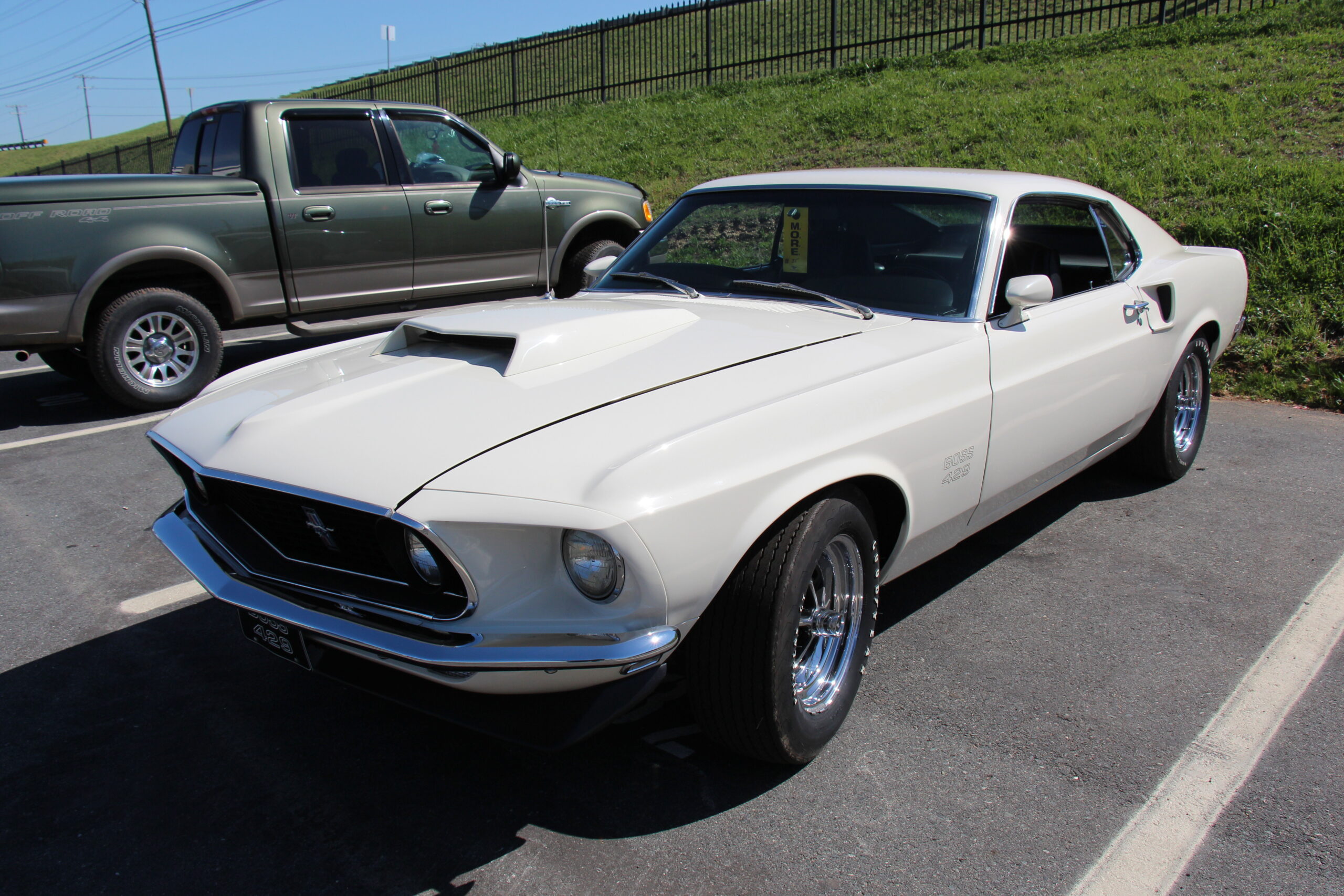
5. **Ford Boss 429 Mustang**
Among the hallowed halls of muscle car fanaticism, the Ford Boss 429 Mustang is spoken of with a reverence usually reserved for deities. Affectionately known as the “Boss 9” or simply “the Boss,” this machine was a symphony of raw power and unadulterated aggression. Ford’s engineers had a singular mission: pack in as much power as humanly possible, and they achieved it by stripping out basically everything but the essential engine components.
The result was a barely street-legal monster that could churn out an astounding 500 horsepower, pushing the boundaries of what was permissible on public roads. This wasn’t a car for the faint of heart; it was a visceral, thunderous experience designed to dominate drag strips and leave an unforgettable impression wherever it roared. Its aggressive styling perfectly matched the beast lurking beneath the hood.
Such a single-minded pursuit of power meant rarity. There are fewer than 1,500 of these magnificent machines in existence, making each one a true unicorn in the collector’s market. So, if fate ever smiles upon you and you get a chance to drive the Boss, heed this advice: do not pass it up. It’s a legendary, once-in-a-lifetime encounter with American muscle at its most formidable.
Car Model Information: 2018 Ford Mustang EcoBoost Premium
Caption: 1969 Boss 429
Layout: Longitudinal engine
Manufacturer: Ford Motor Company
Production: 1969–1970
Name: Mustang Boss 429
Class: Muscle car
BodyStyle: coupé
Assembly: Dearborn, Michigan
Height: 50.4 in
Abbr: on
Length: 187.4 in
Width: 71.7 in
Engine: 429 cuin
Transmission: manual transmission
Weight: 3870 lb
Categories: All Wikipedia articles needing clarification, All articles needing additional references, All articles with unsourced statements, Articles needing additional references from August 2008, Articles with short description
Summary: The Boss 429 Mustang is a high-performance Ford Mustang variant that was offered by Ford in 1969 and 1970. It featured a race-designed 429 cu in (7.0 L) semi-hemispherical head version of the big block 429 V8, offered in the car both to homologate the engine for NASCAR racing and to offer a bigger, more-powerful version of the popular small block 5 L Boss 302 Mustang.
The price of all the performance and modifications was steep: at nearly $5,000 a Boss 429 was roughly twice the price of the base model inline-6 Mustang. A total of 1,359 Boss 429s were produced.
Get more information about: Boss 429 Mustang
Buying a high-performing used car >>>
Brand: Ford Model: Boss 429 Mustang
Price: $21,000 Mileage: 43,830 mi.
Read more about: Unleash Your Inner Gearhead: 14 Classic Car Restoration Projects Under $10K That Promise High Returns

6. **U.S. Army Jeep**
Some vehicles transcend their mechanical nature to become symbols of something far greater. The U.S. Army Jeep is one such icon, not merely a car but, as General and President Dwight Eisenhower wisely noted, one of “the three tools that won the war.” This wasn’t a machine built for glamour or speed in the traditional sense, but for an unparalleled utility that proved indispensable in the crucible of World War II.
From launching audacious sneak attacks on Erwin Rommel’s forces in the harsh terrain of North Africa to ferrying brave French Resistance fighters right under the noses of the Nazis, these rugged workhorses were everywhere. Jeeps, meticulously built by both Ford and Willys, were utilized by every single branch of every Allied military, becoming the backbone of countless operations and a lifeline in the most desperate of times.
This is a machine with an undeniable legacy, a stark contrast to the flashier rides. Cadillacs and Corvettes might indeed look cooler, with their sleek lines and powerful engines, but the fundamental question remains: have they ever saved the world? The Jeep stands as a humble, yet towering, testament to purpose-built design and an enduring symbol of resilience and freedom.
Car Model Information: 2017 Jeep Wrangler Unlimited Rubicon
Name: Jeep
Logo: Jeep wordmark.svg
LogoSize: 200
Caption: Jeep dealership in Rockville, Maryland (2004)
Producttype: Sport utility vehicle,Luxury vehicle
Currentowner: Stellantis
Producedby: Chrysler
Country: U.S.
Introduced: [object Object]
Related: Willys MB
Markets: refn
Previousowners: Willys,Kaiser Jeep,American Motors Corporation
Ambassadors: Bob Broderdorf, Jeep Brand CEO
Website: https://www.jeep.com/|jeep.com
Categories: Accuracy disputes from February 2020, All accuracy disputes, All articles with dead external links, All articles with self-published sources, American Motors
Summary: Jeep is an American automobile brand, now owned by multi-national corporation Stellantis. Jeep has been part of Chrysler since 1987, when Chrysler acquired the Jeep brand, along with other assets, from its previous owner, American Motors Corporation (AMC).
Jeep’s current product range consists solely of sport utility vehicles—both crossovers and fully off-road worthy SUVs and models, including one pickup truck. Previously, Jeep’s range included other pick-ups, as well as small vans, and a few roadsters. Some of Jeep’s vehicles—such as the Grand Cherokee—reach into the luxury SUV segment, a market segment the 1963 Wagoneer is considered to have started. Jeep sold 1.4 million SUVs globally in 2016, up from 500,000 in 2008, two-thirds of which in North America, and was Fiat-Chrysler’s best selling brand in the U.S. during the first half of 2017. In the U.S. alone, over 2400 dealerships hold franchise rights to sell Jeep-branded vehicles, and if Jeep were spun off into a separate company, it is estimated to be worth between $22 and $33.5 billion—slightly more than all of FCA (US). Bob Broderdorf is the current CEO of the Jeep brand worldwide.
Prior to 1940 the term “jeep” had been used as U.S. Army slang for new recruits or vehicles, but the World War II “jeep” that went into production in 1941 specifically tied the name to this light military 4×4, arguably making them the oldest four-wheel drive mass-production vehicles now known as SUVs. The Jeep became the primary light four-wheel-drive vehicle of the United States Armed Forces and the Allies during World War II, as well as the postwar period. The term became common worldwide in the wake of the war. Doug Stewart noted: “The spartan, cramped, and unstintingly functional jeep became the ubiquitous World War II four-wheeled personification of Yankee ingenuity and cocky, can-do determination.” It is the precursor of subsequent generations of military light utility vehicles such as the Humvee, and inspired the creation of civilian analogs such as the original Series I Land Rover. Many Jeep variants serving similar military and civilian roles have since been designed in other nations.
The Jeep marque has been headquartered in Toledo, Ohio, ever since Willys–Overland launched production of the first CJ or Civilian Jeep branded models there in 1945. Its replacement, the conceptually consistent Jeep Wrangler series, has remained in production since 1986. With its solid axles and open top, the Wrangler has been called the Jeep model that is as central to the brand’s identity as the 911 is to Porsche.
At least two Jeep models (the CJ-5 and the SJ Wagoneer) enjoyed extraordinary three-decade production runs of a single body generation.
In lowercase, the term “jeep” continues to be used as a generic term for vehicles inspired by the Jeep that are suitable for use on rough terrain.
In Iceland, the word Jeppi (derived from Jeep) has been used since World War II and is still used for any type of SUV.
Get more information about: Jeep
Buying a high-performing used car >>>
Brand: Jeep Model: Jeep
Price: $29,318 Mileage: 67,306 mi.
Read more about: Sonic Sanctuaries on Wheels: The Definitive Guide to 2025 Cars with Elite Sound Systems for Music Lovers
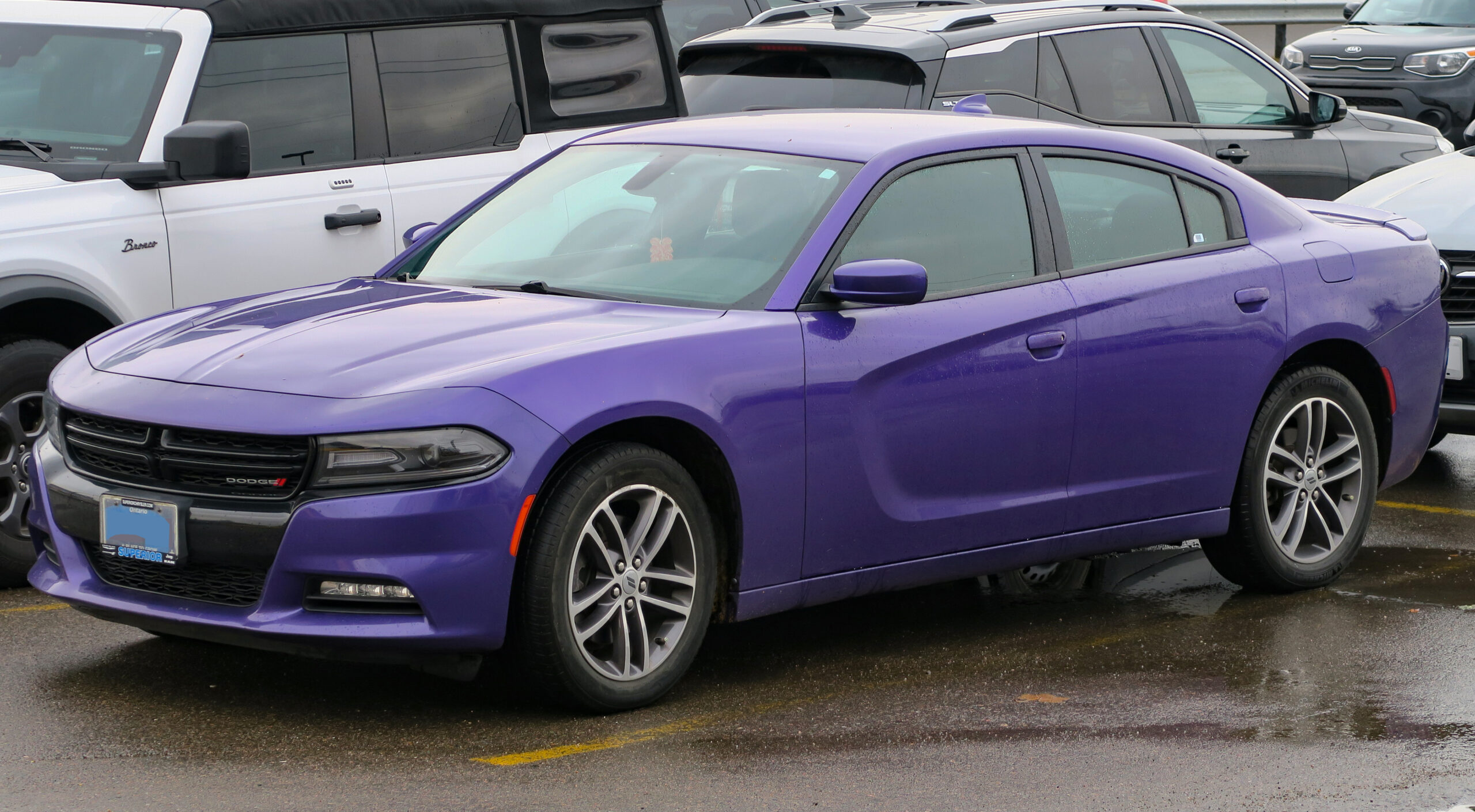
7. **Dodge Charger**
The Dodge Charger – now, there’s a name that instantly conjures images of raw American muscle, iconic style, and a legacy that burns brighter than ever. Currently tearing up the asphalt in its seventh generation, the Charger has always been synonymous with serious power and an undeniable presence. It’s a car that doesn’t just arrive; it makes an entrance, leaving no doubt about its intentions.
This isn’t just about looking tough; it’s about backing it up. A Charger Daytona was the very first car to shatter the formidable 200 mph barrier on a NASCAR track, a monumental achievement that cemented its reputation for blistering speed and engineering prowess. This was a car built for performance, designed to push limits and dominate.
While the 1969 model holds legendary status as the ‘General Lee’ from ‘The Dukes of Hazzard’, for many, including us, the visceral thrill of the 1970 Charger R/T driven by Vin Diesel in the early, street-racing focused ‘Fast and Furious’ movies is simply unbeatable. That car, with its menacing stance and explosive power, perfectly captured the essence of the Charger: an absolute American brute, a pop culture icon, and a true collector’s item that continues to stir the soul of anyone with a drop of octane in their veins.
Now that we’ve journeyed through some of the foundational legends and early game-changers that reshaped the industry, it’s time to shift gears and explore a diverse lineup that truly rounds out any dream garage. We’re talking about high-performance beasts, design marvels that stop you dead in your tracks, and cultural touchstones that embody the very soul of motoring. From European exotics that scream sophistication to sports car legends and cinematic icons, these next seven machines are more than just metal; they are pure, unadulterated automotive aspiration.
Car Model Information: 2022 Dodge Charger R/T Scat Pack
Name: Dodge Charger
Caption: 1969 Dodge Charger
Manufacturer: Dodge
Production: 1966–1978,1981–1987,2005–present
ModelYears: 1966–1978,1982–1987,2006–present
Categories: 1960s cars, 1970s cars, 1980s cars, 2000s cars, 2010s cars
Summary: The Dodge Charger is a model of automobile marketed by Dodge in various forms over eight generations since 1966.
The first Charger was a show car in 1964. A 1965 Charger II concept car resembled the 1966 production version.
In the United States, the Charger nameplate has been used on mid-size cars, personal luxury coupes, subcompact hatchbacks, and full-size sedans.
Get more information about: Dodge Charger
Buying a high-performing used car >>>
Brand: Dodge Model: Charger
Price: $51,990 Mileage: 33,330 mi.
Read more about: Minivans That Ace Safety and Family Life: Your Top Choices and What to Avoid
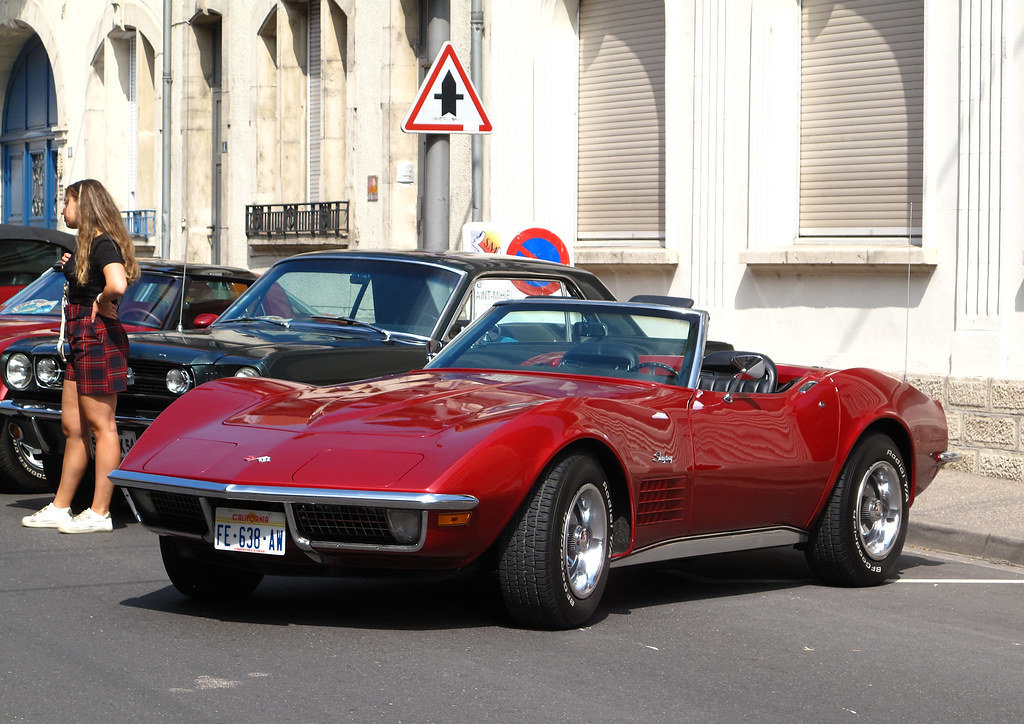
8. **Chevrolet Corvette Stingray**
Ah, the Corvette Stingray. Just the name conjures images of open roads, sun-drenched tarmac, and the thrilling roar of a V8. This isn’t just a classic muscle car; it’s practically America’s automotive sweetheart, a machine so profoundly influential that the second generation of Corvettes, the Stingray line, could have made America dominant in the 1960s auto market all on its own. It’s a testament to its audacious design and formidable power that it stood out so dramatically in such a competitive era.
What truly sets the Stingray apart, especially for those just beginning their foray into the intoxicating world of classic car collecting, is its surprising accessibility. Unlike some of its rarer, stratospherically priced contemporaries, the Stingray remains a magnificent entry point into this cherished hobby, with plenty still cruising around at genuinely affordable prices. This means that the dream of owning a piece of pure American automotive brilliance isn’t just for the ultra-wealthy; it’s within reach for the dedicated enthusiast.
From its unmistakable sculpted lines, often compared to something that just emerged from the ocean, to the thunderous soundtrack of its engine, the Corvette Stingray delivers an unfiltered, visceral driving experience that is utterly intoxicating. It’s a car that demands to be driven, to be felt, and to be heard. Owning one isn’t just about possessing a vehicle; it’s about embracing a slice of American performance heritage, a vibrant chapter in the muscle car saga that continues to captivate hearts and minds.
Car Model Information: 2018 Ford Mustang EcoBoost Premium
Categories: All article disambiguation pages, All disambiguation pages, Disambiguation pages, Short description is different from Wikidata
Summary: Chevrolet Corvette Stingray was the name for several model years of Chevrolet Corvettes:
Corvette Stingray (concept car), concept cars from 1959 and 2009
Chevrolet Corvette (C2), the second generation of the Corvette, introduced in 1963, referred to as the Corvette Sting Ray
Chevrolet Corvette (C3), the third generation of the Corvette, introduced in 1968, referred to as the Corvette Stingray from 1969 through 1976 — in 1968, the Corvette did not have the Stingray badging
Chevrolet Corvette (C7), the seventh generation of the Corvette, introduced in 2014, referred to as the Corvette Stingray
Chevrolet Corvette (C8), the eighth generation of the Corvette, introduced in 2020, referred to as the Corvette Stingray
These generations did not use the name stingray:
Chevrolet Corvette (C1), the first generation of the Corvette, introduced in 1953
Chevrolet Corvette (C4), the fourth generation of the Corvette, introduced in 1984
Chevrolet Corvette (C5), the fifth generation of the Corvette, introduced in 1997
Chevrolet Corvette (C6), the sixth generation of the Corvette, introduced in 2005
Get more information about: Chevrolet Corvette Stingray
Buying a high-performing used car >>>
Brand: Chevrolet Model: Corvette Stingray
Price: $21,000 Mileage: 43,830 mi.
Read more about: The 2025 Chevy Corvette Lineup: A Deep Dive into How the New Models Elevate America’s Favorite Sports Car
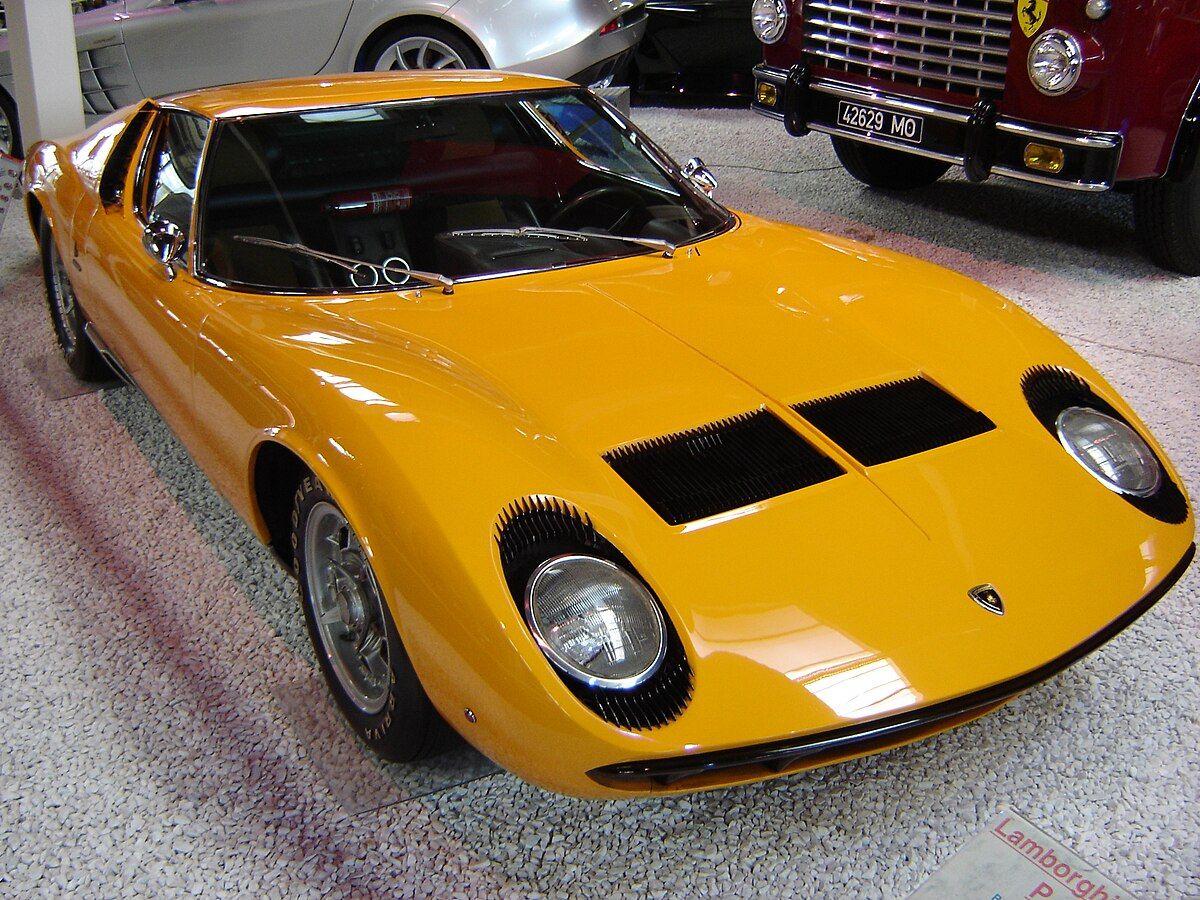
9. **Lamborghini Miura**
Prepare yourselves, because if ever there was a car that arrived with the force of a supernova and completely redefined what a sports car could be, it was the Lamborghini Miura. When this absolute titan first burst onto the scene in 1966, it wasn’t just another car; it was a brazen, defiant shot across Ferrari’s bow, a declaration to the entire automotive world that there was an entirely new, utterly sensational force at play in Italy. And boy, did it make an impression.
This was a machine born of pure, unadulterated passion and engineering bravado. With its monumental V12 engine nestled transversely behind the cabin and six carburetors feeding that beast, the Miura wasn’t merely fast; it was ballistic. The sheer power and mechanical symphony it produced were legendary. You get the feeling that if you could find a ramp big enough, a Miura could probably launch into orbit, leaving a trail of stunned silence in its wake.
But it wasn’t just about raw power; the Miura was a visual masterpiece, a low-slung, curvaceous sculpture that looked like nothing else on the road. It redefined exotic, setting the blueprint for every mid-engined supercar that followed. Owning a Miura isn’t just about collecting a car; it’s about curating a piece of automotive art, a groundbreaking legend that proved that automotive engineering could be as beautiful as it was brutal.
Read more about: Forged in Fire: The Greatest Car-Brand Rivalries That Redefined Automotive Excellence
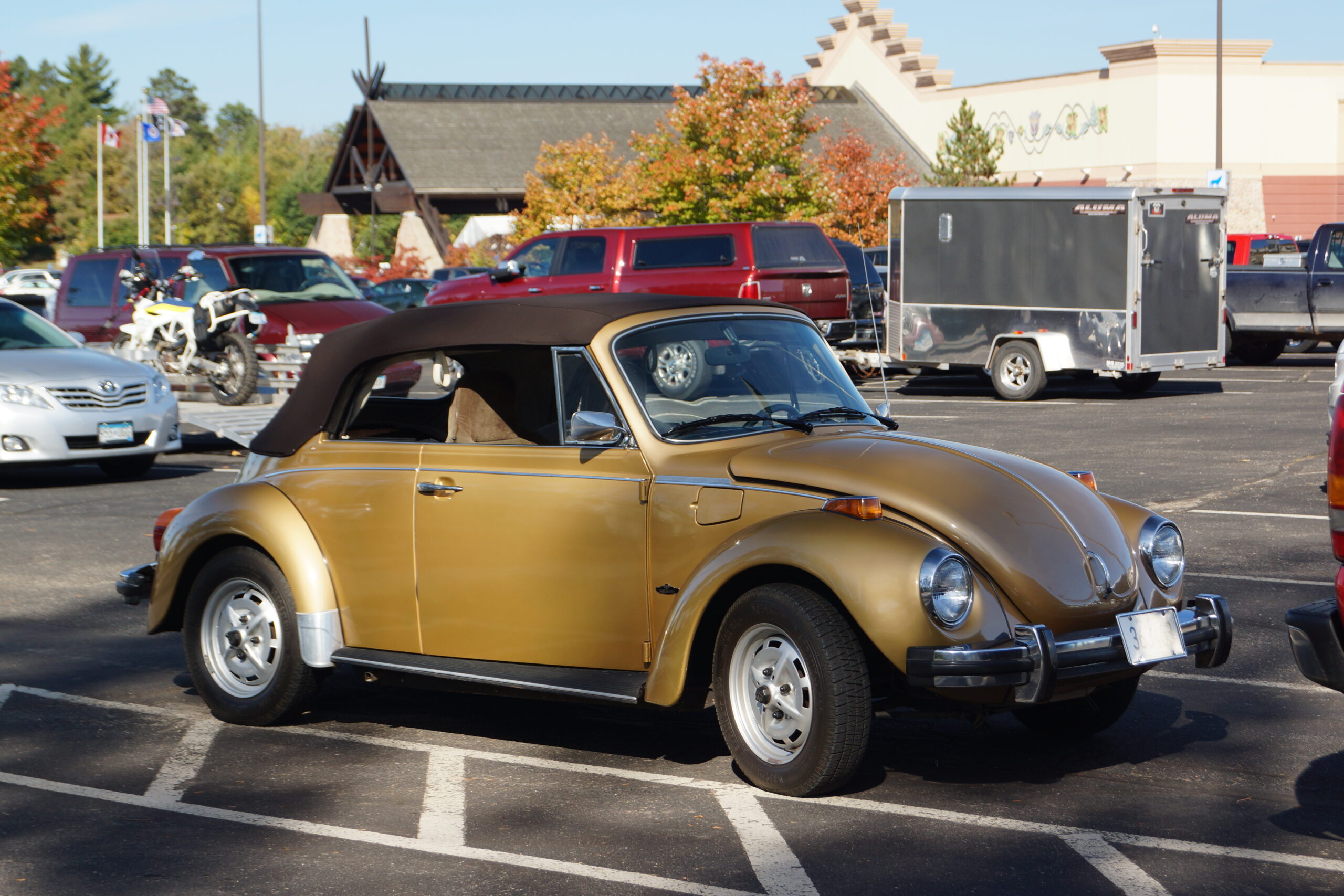
10. **Volkswagen Beetle**
Now for something completely different, yet every bit as iconic, if not more so, than the snarling beasts we’ve discussed thus far: the Volkswagen Beetle. In an era where too many cars seem to blend into a homogenous blob, losing their individual flavors and distinctive personalities, the Beetle stands out like a truly adorable, iconoclastic beacon. It’s a car that, despite its humble origins, possesses an undeniable charm and character that simply refuses to be ignored.
Its charm is so potent, in fact, that it even won the audition for the title role in Disney’s beloved ‘The Love Bug’ – and for the most heartwarming reason. Disney employees, utterly captivated by its unique, friendly countenance, apparently couldn’t resist the urge to pet it! We totally get the feeling; there’s something about the Bug’s endearing design that evokes an almost universal sense of affection. It’s not just a car; it’s practically a member of the family.
From its unmistakable rounded profile to its cheerful, unpretentious demeanor, the Beetle is a car that makes you smile. It’s a testament to timeless design that has transcended generations and fads, remaining instantly recognizable and deeply loved worldwide. The automotive landscape could learn a thing or two from its unwavering commitment to individuality. In a world of increasing uniformity, we earnestly hope the Beetle never, ever changes its delightfully unique self.
Car Model Information: 2012 Volkswagen Beetle 2.5L
Sp: uk
Name: Volkswagen Type 1,”Beetle”
Caption: 1965–1966 Volkswagen Käfer
Manufacturer: Volkswagen
Alt: A front-three quarters view of a pale-yellow Volkswagen Käfer. It features 165/80R15 tires, which shod 15×4. 5″ silver, circular wheels. The Käfer features a beetle-like body, and its window is open. The picture is taken with much greenery in the background, and the photo was edited to give it a more warmer tone.
Aka: List of names for the Volkswagen Type 1
Assembly: #Markets and assembly
Designer: Ferdinand Porsche
Class: Small family car
BodyStyle: Sedan (automobile),convertible
Production: 1938–2003,21,529,464 produced
Successor: Volkswagen Golf Mk1,Volkswagen Gol#First generation (Typ30, 1980),Volkswagen New Beetle
Layout: Rear-engine, rear-wheel-drive layout
Engine: Petrol,Volkswagen air-cooled engine,1192 cc H4,1285 cc H4,1493 cc H4,1584 cc H4
Transmission: manual transmission,Saxomat,Autostick
Wheelbase: convert
Length: convert
Width: convert
Height: 1500 mm
Abbr: on
Weight: convert
Categories: 1940s cars, 1950s cars, 1960s cars, 1970s cars, 1980s cars
Summary: The Volkswagen Beetle, officially the Volkswagen Type 1, is a small family car produced by the German company Volkswagen from 1938 to 2003. A global cultural icon known for its bug-like design, the Beetle is widely regarded as one of the most influential cars of the 20th century. Its production period of 65 years is the longest for any single generation of automobile, and its total production of 21.5 million units makes it the most produced car of a single platform in history and the second-highest of all nameplates manufactured in the 20th century.
The Beetle was conceived in the early 1930s. The leader of Nazi Germany, Adolf Hitler, decided there was a need for a people’s car—an inexpensive, simple, mass-produced car—to serve Germany’s new road network, the Reichsautobahn. The German engineer Ferdinand Porsche and his design team began developing and designing the car in the early 1930s, but the fundamental design concept can be attributed to Béla Barényi in 1925, predating Porsche’s claims by almost ten years. The result was the Volkswagen Type 1 and the introduction of the Volkswagen brand. Volkswagen initially slated production for the late 1930s, but the outbreak of war in 1939 meant that production was delayed until the war had ended. The car was originally called the Volkswagen Type 1 and marketed simply as the Volkswagen. It was not until 1968 that it was officially named the “Beetle”.
Volkswagen implemented designations for the Beetle in the 1960s, including 1200, 1300, 1500, 1600, 1302, and 1303. Volkswagen introduced a series of large luxury models throughout the 1960s and 1970s—comprising the Type 3, Type 4 and K70—to supplement the Beetle, but none of these models achieved the level of success that it did. In 1972, it became the best-selling car of all time, a position it retained for nearly three decades. Rapidly changing consumer preferences toward front-wheel drive compact hatchbacks in Europe prompted Volkswagen’s gradual shift away from rear-wheel drive, starting with the Golf in 1974. In the late 1970s and ’80s, Japanese automakers dominated some markets around the world, which contributed to the Beetle’s declining popularity.
The Beetle remains one of the best-selling cars of all time and is the first to sell over 20 million units. Over its lifespan, its design remained consistent, yet Volkswagen implemented over 78,000 incremental updates. These modifications were often subtle, involving minor alterations to its exterior, interior, colours, and lighting. Some more noteworthy changes included the introduction of new engines, models and systems, such as improved technology or comfort. The Beetle maintains a substantial cultural influence and is regarded as one of the most iconic vehicles in automotive history; its success largely influenced the way automobiles are designed and marketed, and propelled Volkswagen’s introduction of a Golf-based series of vehicles.
Get more information about: Volkswagen Beetle
Buying a high-performing used car >>>
Brand: Volkswagen Model: Beetle
Price: $13,985 Mileage: 27,389 mi.
Read more about: Used Car Buyers Beware: These 7 Vehicle Brands Are Most Often Reported as ‘Lemons’ – Your Guide to Avoiding Costly Mistakes

11. **Plymouth Road Runner Hemi**
Calling all muscle car fanatics! If you hear a distinctive ‘meep-meep’ echoing from the asphalt, you know a legend is about to blast past. We’re talking about the Plymouth Road Runner, a lean, mean, cartoon-character-named machine that was designed with a singular, unapologetic purpose: to compete directly with the heavyweight champions from Ford and Dodge. And while it might not have entirely dominated the market in terms of sheer sales volume, it certainly dominated the hearts of those who craved unadulterated power and an incredible driving experience.
Beneath that purposeful hood lay the beating heart of a beast: a colossal 7-liter V8 Hemi engine. This wasn’t just an engine; it was a force of nature, an automotive equivalent of a sonic boom waiting to be unleashed. For its owners, the Hemi-powered Road Runner delivered an experience that was nothing short of incredible, a raw, thunderous symphony of American muscle that cemented its place in the annals of performance history. It was pure, distilled horsepower, ready to shred tires at a moment’s notice.
This was a car that didn’t bother with excessive frills or unnecessary luxury; it was about performance, plain and simple. Its stripped-down interior and focus on power made it an honest, no-nonsense contender in the muscle car wars. The Road Runner Hemi represents an era where horsepower was king, and a car’s character was defined by the sheer force it could unleash on the open road. It’s a true icon for those who understand that sometimes, less is more, especially when ‘less’ means fewer distractions from 7 liters of pure Hemi fury.
Car Model Information: 2021 Honda Accord EX-L 1.5T
Name: Plymouth Road Runner
Assembly: Detroit,Michigan
Manufacturer: Plymouth (automobile)
Class: Mid-size car
Production: 1968–1980
Related: unbulleted list
Layout: FR layout
Categories: 1970s cars, 1980s cars, All articles needing additional references, All articles with peacock terms, All articles with unsourced statements
Summary: The Plymouth Road Runner is a muscle car introduced by Chrysler in the United States for the 1968 model year and marketed under its Plymouth brand. Initially based on the Belvedere, the brand’s basic mid-size model, the Road Runner combined a powerful engine with a spartan trim level and a price that undercut increasingly upscale and expensive muscle cars such as the Pontiac GTO and Plymouth’s own GTX. It was initially a sales success.
The Road Runner was built in three generations on the mid-size B platform. Like most muscle cars, its performance and sales declined in the 1970s due to an increasing focus on fuel economy and the adoption of more stringent U.S. emission standards. The nameplate became to a trim package for the compact Plymouth Volaré for model year 1976—no longer offering any special performance capability—and was discontinued in 1980.
Get more information about: Plymouth Road Runner
Buying a high-performing used car >>>
Brand: Plymouth Model: Road Runner
Price: $19,900 Mileage: 81,000 mi.
Read more about: These Are The Fastest Muscle Cars Ever: From Classic Legends to Modern Monsters
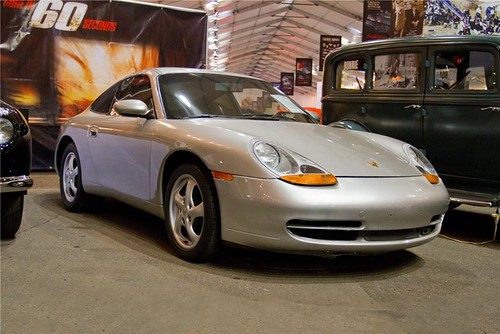
12. **Porsche 911**
Few car names resonate with quite the same level of reverence and enduring legacy as the Porsche 911. This magnificent machine didn’t just join the sports car market; it helped make Porsche a serious, undeniable competitor, carving out a niche for itself that is utterly unique. It’s a car that effortlessly combines aesthetic brilliance with track-shredding performance, wrapped up in a package that has retained its timeless appeal for decades.
Just look at it! The 911 is a visual masterpiece, instantly recognizable with its distinctive silhouette. But its beauty is far from skin-deep. Take it to a racetrack, and it will tear up the asphalt with surgical precision, proving that its iconic design is perfectly matched by its engineering prowess. This dual mastery of form and function means it has massive value as a collector’s item, a solid investment in both automotive history and sheer driving pleasure.
What truly distinguishes the Porsche 911 for us, however, is Porsche’s unwavering philosophy: they don’t want their cars to be mere museum pieces. They are meant to be driven, experienced, and cherished on the road. The 911 perfectly embodies this ethos; you can still easily find one today that’s ripe for restoration, allowing enthusiasts to breathe new life into these mechanical marvels and continue their glorious journey. It’s a living legend, always ready for the next adventure, proving that true performance never collects dust.
Car Model Information: 2021 Porsche 911
Name: Porsche 911
Caption: The 1 millionth 911 produced on display at Volkswagen Group Forum, Berlin
Designer: Ferdinand Alexander Porsche
Manufacturer: Porsche
Production: September 1964 – present
Assembly: Stuttgart,Baden-Württemberg
Class: Sports car
BodyStyle: unbulleted list
Related: unbulleted list
Layout: Rear-engine design,rear-wheel drive
Predecessor: Porsche 356
Categories: 1970s cars, 1980s cars, 1990s cars, 2+2 coupés, 2000s cars
Summary: The Porsche 911 model series (pronounced Nine Eleven or in German: Neunhundertelf, or colloquially Neunelfer) is a family of two-door, high performance rear-engine sports cars, introduced in September 1964 by Porsche of Stuttgart, Germany, and now in its eighth generation. All 911s have a rear-mounted flat-six engine, and usually 2+2 seating, except for special 2-seater variants. Originally, 911s had air-cooled engines, and torsion bar suspension, but the 911 has been continuously enhanced, and evolved across generations. Though the 911 core concept has remained largely unchanged, water-cooled engines were introduced with the 996 series in 1998, and front and rear suspension have been replaced by Porsche-specific MacPherson suspension up front, and independent multi-link rear suspension.
The 911 has been raced extensively by private and factory teams, in a variety of classes. It is among the most successful competition cars. In the mid-1970s, the naturally aspirated 911 Carrera RSR won world championship races including Targa Florio and the 24 Hours of Daytona. The 911-derived 935 turbo also won the 24 Hours of Le Mans in 1979. Porsche won the World Championship for Makes in 1976, 1977, 1978, and 1979 with 911-derived models.
In a 1999 poll to determine the Car of the Century, the 911 ranked fifth — one of two in the top five that had remained continuously in production (the original Beetle remained in production until 2003). The one millionth example was manufactured in May 2017 and is in the company’s permanent collection.
Get more information about: Porsche 911
Buying a high-performing used car >>>
Brand: Porsche Model: 911
Price: $126,995 Mileage: 8,629 mi.
Read more about: The Ultimate Off-Road Showdown: 2025 Ford Bronco vs. Land Rover Defender Face-Off
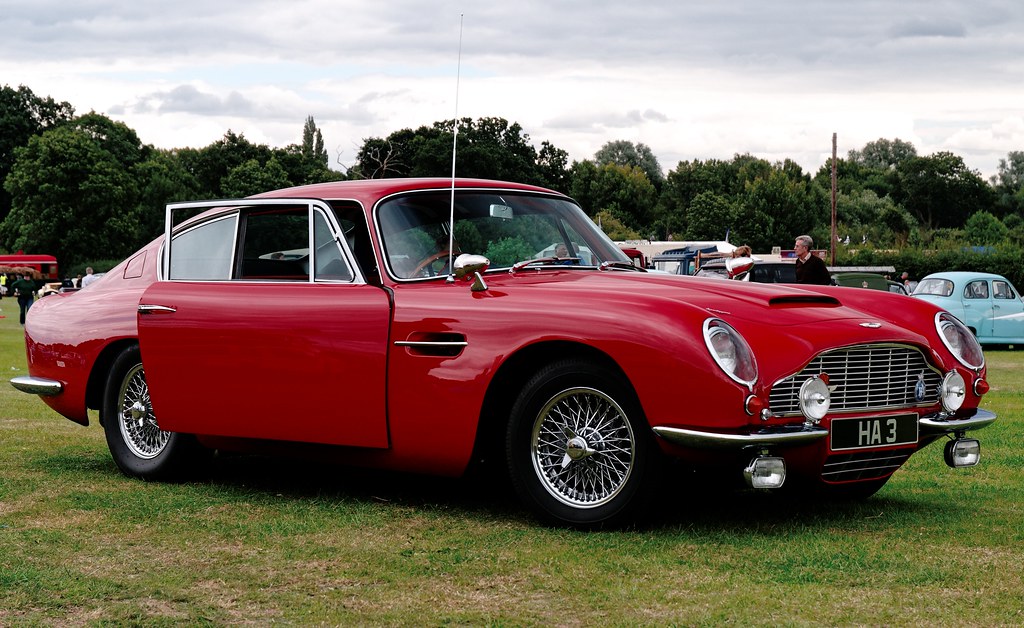
13. **Aston Martin DB5**
Alright, hands up if you just read “Aston Martin DB5” and instantly heard the iconic 007 theme music start playing in your head. We thought so! It’s practically an involuntary reflex. Sean Connery’s legendary portrayal of James Bond, paired with his undeniably tricked-out Aston Martin, created one of the 20th century’s finest, most inseparable star-car partnerships. It’s so iconic, in fact, that it’s easy to forget the DB5 is a real car, a tangible piece of automotive excellence, not just a movie prop.
But a real car it is, and what a car! The DB5 isn’t just about cinematic gadgetry, though we wouldn’t say no to an ejector seat. Even without the oil slick or the machine guns, this machine stands as the absolute pinnacle of British luxury, sophistication, and understated power. Its elegant lines, sumptuous interior, and refined performance speak volumes without needing any explosions or car chases to prove its worth. It exudes a class that few other vehicles can hope to match.
To drive an Aston Martin DB5 is to step into a world where grace meets grunt, where every journey feels like a grand tour, and where you’re constantly reminded of its legendary status. It’s not just a means of transport; it’s a statement, a piece of cultural history, and an incredibly rewarding driving experience. Bond made it famous, but the DB5’s inherent brilliance made it eternal. It’s truly a car collector’s crown jewel.
Car Model Information: 2021 Honda Accord EX-L 1.5T
Name: Aston Martin DB5
Manufacturer: Aston Martin
Production: 1963–1965 (1,059 units),2020 (25 units)
Assembly: Newport Pagnell,England
Designer: Carrozzeria Touring Superleggera
Class: Grand tourer
BodyStyle: coupé
Layout: Front-engine, rear-wheel-drive layout
Engine: DOHC,Straight-6,3995 cc
Order: flip
Abbr: on
Powerout: convert
Transmission: ZF Friedrichshafen
Length: 4570 mm
Width: 1680 mm
Wheelbase: 98.0 in
Predecessor: Aston Martin DB4
Successor: Aston Martin DB6
Doors: 2
Weight: 3311 lb
Sp: uk
Categories: All Wikipedia articles written in British English, Articles with short description, Aston Martin vehicles, CS1: unfit URL, Cars discontinued in 1965
Summary: The Aston Martin DB5 is a British grand tourer (GT) produced by Aston Martin and designed by Italian coachbuilder Carrozzeria Touring Superleggera. Originally produced from 1963 to 1965, the DB5 was an evolution of the final series of DB4. The “DB” designation is from the initials of David Brown who built up the company from 1947 onwards.
The DB5 is best-known for its role in the James Bond films. It was first driven by the fictional spy in the film Goldfinger (1964). In 2013, the car featured on a “British Auto Legends” postage stamp issued by the Royal Mail.
Get more information about: Aston Martin DB5
Buying a high-performing used car >>>
Brand: Aston Martin Model: DB5
Price: $19,900 Mileage: 81,000 mi.
Read more about: Navigating the High-Performance Landscape: An Expert Guide to Buying Your 2025 Luxury Coupe
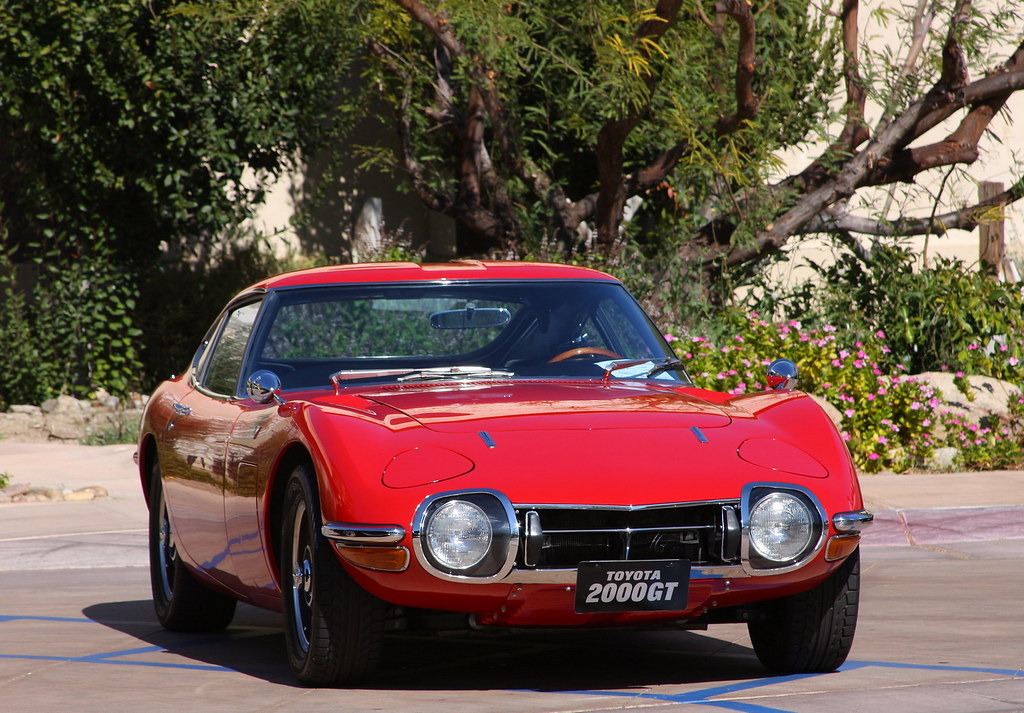
14. **Toyota 2000GT**
Speaking of cinematic icons and espionage, our final entry on this magnificent list takes us back to the world of James Bond, but with a surprising twist. While 007 is most famously associated with British engineering, his global adventures occasionally saw him sampling the finest from other nations. And during his visit to Japan, battling the nefarious Ernst Stavro Blofeld in ‘You Only Live Twice,’ Bond didn’t just ride in any car; he commanded a 1967 GT.
This wasn’t just a fleeting movie appearance; it was a monumental moment. For many American audiences, seeing James Bond himself behind the wheel of a Toyota 2000GT was their very first taste, a tantalizing preview of the incredible automotive prowess that Japan was capable of. It subtly, yet powerfully, showcased the potential that the Datsun 240Z would fully bring to fruition just three years later, laying crucial groundwork for the widespread acceptance of Japanese sports cars in the West.
The Toyota 2000GT itself is a stunning testament to Japanese design and engineering from an era many overlook. With its sleek, almost alien lines and performance that rivaled European contemporaries, it was a genuine exotic, produced in very limited numbers. It’s a beautifully crafted machine that proves you don’t need a roaring V8 or Italian flair to be truly iconic; sometimes, precision, elegance, and a surprising cinematic cameo are more than enough to etch a car into the collector’s hall of fame.
Read more about: Shifting Gears: 11 Classic 1990s Cars That Are Now Highly Collectible
So there you have it, an exhilarating tour through the ultimate car collector’s dream garage. From the thunderous American muscle to the sophisticated European exotics and the trailblazing Japanese sports cars, each of these machines represents a peak of automotive design, engineering, and cultural impact. They are more than just metal and rubber; they are stories on wheels, relics of eras defined by innovation and passion. Whether you’re a seasoned collector or just a passionate daydreamer, these iconic classics remind us why we fell in love with cars in the first place, cementing their place as truly timeless legends that will continue to captivate for generations to come. They are, unequivocally, the machines that make every car enthusiast’s heart beat a little faster, proving that the golden age of motoring lives on in the roar of their engines and the beauty of their lines.


